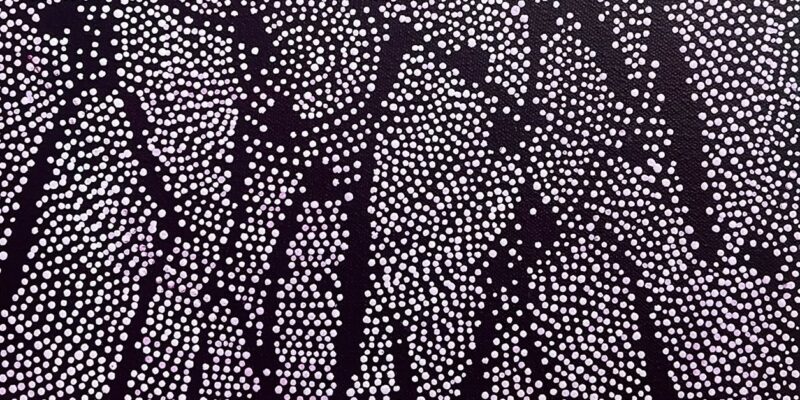At Yallingup Aboriginal Art, we believe Aboriginal art is more than what you see, it’s what you feel, learn, and connect with. Every piece holds meaning. By understanding artwork symbols and stories, you can begin to uncover the deep cultural knowledge carried in each painting.
What Do Aboriginal Art Symbols Mean?
Aboriginal artists use a visual language made up of traditional symbols. These are passed down through generations and often used to tell Dreamtime stories—narratives about Country, ancestors, animals, and the land.
While styles vary across different regions, some common symbols include:
- Concentric circles: Campsites, meeting places, or waterholes
- U-shapes: People sitting on the ground
- Wavy lines: Rivers, travel paths, or songlines
- Dotting patterns: Elements like seeds, rain, or sand dunes
Learning the meaning behind these symbols helps you engage more deeply with the stories Aboriginal artists are sharing.
How Symbols Tell Stories
In Bush Seeds by Roseanne Morton Pwerle, the flowing lines show women walking across Country to gather native seeds. Circular forms mark where they rest and prepare the food.
In Spear Trees by Yondee Shane Hansen, patterns and shapes reflect the traditional process of crafting spears from mallee trees, connecting the artist’s heritage with the natural world.
These artwork symbols and stories are powerful expressions of Aboriginal culture, showing how people and land are deeply connected.
🍃 Come and Explore Aboriginal Art in Yallingup
When you visit Yallingup Aboriginal Art Gallery, you can experience these stories firsthand. Each artwork offers a unique perspective on culture, history, and place.
- View our artist profiles
- Learn more about Aboriginal art symbols at the National Museum of Australia
Take your time in the gallery, listen to the stories, and see what speaks to you!

